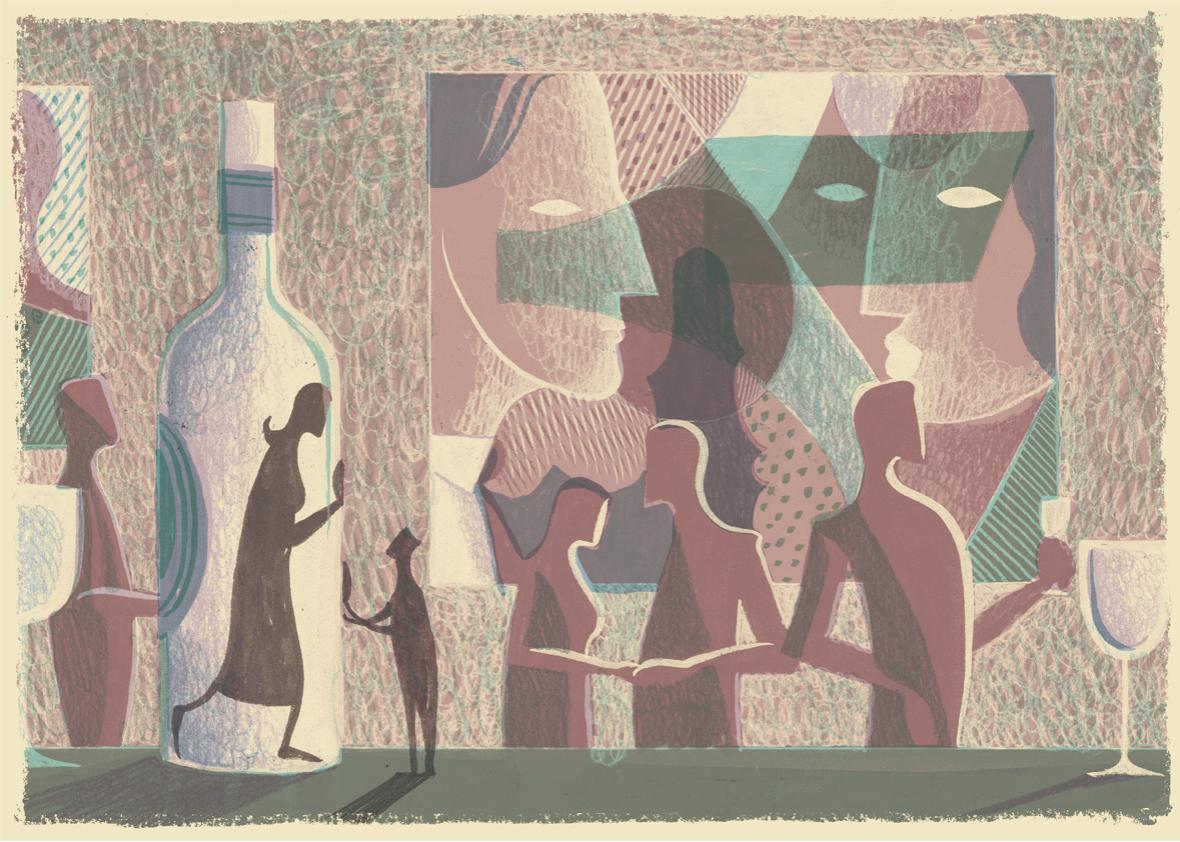About midway through Joyce Maynard’s novel Under the Influence, a character does what we all have done and performs an ill-advised, late-night Google background check on a new acquaintance. “Just doing that search left me feeling guilty,” the character confesses, “as if I had opened up the door to a room that should have stayed shut.” Let us agree that this is not a good simile. The language is drained of literary imagination; the made-up thing (the room) is insufficiently vivid compared to the real thing (the Google search).
A similar problem can haunt any writer whose fiction parallels her own life. It has been a cliché in reviews of Joyce Maynard’s novels to allude ceaselessly to her story. The author, journalist, and memoirist is a figure of fascination: At 18, she sold a feature to the New York Times Magazine that caught the attention of 53-year-old J.D. Salinger. Charmed by both the teenager’s candor and her full-length photograph, the famous recluse sent her a letter; a few months later, she dropped out of Yale to move in with him; in less than a year, she’d been tossed aside. The doomed affair with Salinger became the subject of Maynard’s best-known work, the raw tell-all memoir At Home in the World, for which she was alternately praised and shunned.
Maynard is now the author of nine novels and four works of nonfiction. She’s accumulated one marriage, three children, and one divorce. In February, the same month she published Under the Influence—about a single mother with a drinking addiction—she announced her decades-long struggle with alcoholism.

Micke Sebastien
“My problem,” she wrote in the Huffington Post, “had less to do with the amount of wine I consumed than with what it represented for me – a way to put a veil on sorrow or worry. An escape.” The same goes for Maynard’s protagonist Helen, who confesses that “I didn’t get drunk, but I liked how the wine took the edge off my day … if the alcohol failed to take away the sadness, it made the feeling blurrier.”
Both passages offer sincerity and a kind of conversational pleasure. But both read like straightforward first-person explanation in a “Healthy Living” article, even though only one of them appears there; the other appears in an ostensible work of literature. I’m not sure, finally, that Under the Influence transforms Maynard’s friendly, service-y HuffPo piece in the ways we might expect from art. Many writers entwine life and work, but Maynard’s pages are like the moon to a faraway sun, reflecting borrowed light.
Under the Influence tells the story of Helen, a sensitive 38-year-old who has just lost custody of her young son when she meets Swift and Ava Havilland, two enormously charismatic philanthropists with a fairytale house overrun by adopted dogs. The Havillands take a shine to Helen. (When they meet, she is catering a gallery opening for paintings by “emotionally disturbed adult artists”; they are buying.) They adopt her as they would another stray, inviting her to their extravagant parties and showering her in beautiful, costly gifts. Ava asks Helen, who dreams of becoming a photographer, to catalog her vast art collection in album form. Swift promises to use his connections to help her regain custody of her kid. Though the ménage à trois scene one keeps anticipating never comes, it is still the perfect seduction.
Of course Maynard needs a loyal, stable, boring foil for the Havillands, and his name is Elliott: an accountant who (God help us) reads the tax code for kicks. Though he barely knows her, Elliott falls passionately and steadfastly in love with Helen after beholding her online dating profile, to the consternation of Swift and Ava, who deem him a hopeless square—and a threat.
That these characters are instantly recognizable types is part of the book’s appeal, as well as its downfall. Ava, paralyzed from the waist down, has “an uncanny ability to infuse every one of her projects with potential and promise.” Swift, oversexed and magnetic, collector of Porsches and speedboats, acquired his fortune running “a start-up in Silicon Valley—something to do with making it possible for high-end business travelers to procure last-minute restaurant reservations.” A reader can immediately sniff out the sinister, entitled side to Swift’s vulgarity, and the rot beneath Ava’s willful blitheness and sparkle. Nothing surprises, though all is exaggerated. Though Maynard’s attitude toward Helen is too sympathetic for satire, her cartoonish characters and situations lift her out of realism, resulting in an unsubtle, melodramatic, admittedly addictive goop.
Consider Helen’s ludicrous backstory, which begins with a missing father and a neglectful mother: “I remember a great many bologna sandwiches and granola bars … Old lottery tickets piled on the counter, never the winning number.” As a child, she fantasized about moneyed elegance and informed her classmates that she was Audrey Hepburn’s granddaughter. (One adult acquaintance believes her, in a scene Maynard attempts to mine for bittersweet laughter, which is when I realized that no one in this book thinks or behaves like an actual human being.) Helen earns a full scholarship to college but gives it up to abscond with her married film professor, who returns to his wife six months later. Penniless, she weds an emotionally abusive mortgage broker named Dwight, with whom she has a son, Ollie; Dwight unceremoniously divorces her and seems content to ignore the fact of his son’s existence, while his ex-wife slips into a kind of nocturnal, secret alcoholism that allows her to function normally during the day.
One night, however, Ollie wakes up with the sure signs of appendicitis, and Helen, too addled to call an ambulance, is arrested for driving under the influence en route to the hospital. All of this (unfolding over the course of 10 or so pages) culminates in a court hearing, during which the vindictive Dwight tries to scrub Helen from her son’s life, and a judge actually stands up to declare: “Four years ago my wife of thirty-four years was killed by a drunk driver.”
Oh dear. I was excited to read Under the Influence because the themes it promised to address seemed at once fascinating and underexplored. A vulnerable soul longing to insinuate herself into a couple’s enchanted life. Addiction that doesn’t look, from the outside, like addiction. The romance of friendship, which can thrum with desire and envy and complication.
But the novel isn’t “about” anything—it’s just plot, reheated from stories we already know but can’t quite remember. Alas, the Havillands’ relationship is not what it seems, though Under the Influence might have been more interesting as a fable about a Master of the Universe and his ditzy, paraplegic wife, caught up endlessly in their self-absorbed love as the real people orbiting around them change and suffer. Maynard could have asked us to take Swift and Ava at face value and then leaned into their sudsy improbability. Instead, she stagily “lifts the veil” on the couple’s profound brokenness, as if a paralyzed woman and her playboy husband who spend their life together trying to buy the world’s admiration could, in a novel like this, be anything other than profoundly broken.
In an odd way, the book’s clichés—exemplars of the unlifelike and unbelievable—feel like a consequence of Maynard’s decision to mine her own life for material. Helen’s fragility, Swift and Ava’s venality, read as real qualities sent through a rudimentary fictionalization machine. Instead of a fully imagined novelistic world, Maynard gives us art as echo or schmaltzy impression; one can’t help sensing that the kernel of the book is elsewhere, outside the covers. Under the Influence, in other words, falls under the influence of an implied, more fascinating story—but it can claim little influence of its own.
—
Under the Influence by Joyce Maynard. William Morrow.
See all the pieces in the Slate Book Review.
